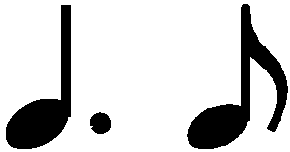



Issues : Dotted or even rhythm
|
b. 46
|
composition: Op. 25 No 11, Etude in A minor
..
Based on the fact of writing the part of the L.H. under the semiquavers of the R.H., the equal quavers in GC (→GE) are a result of a mistake of the copyist who forgot to add the dot extending b category imprint: Differences between sources issues: Errors of GC , Dotted or even rhythm |
|||||
|
b. 55
|
composition: Op. 30, Mazurka in D♭ major
..
In the main text we give the FC (→GE) version. Although in analogous bars 49, 51 and 53 the second note is a semiquaver, the g2 quaver does not seem to be a mistake – together with the e2 note (prolonged due to the fact that it was played before), it is the quaver that constitutes an augmented version of the dotted rhythm opening the motif ( category imprint: Differences between sources issues: Errors in FE , Dotted or even rhythm |
|||||
|
b. 61
|
composition: Op. 26 No 1, Polonaise in C♯ minor
..
The change of the rhythm introduced in the proofreading of FE1 includes all features of a Chopin improvement. category imprint: Differences between sources |
|||||
|
b. 61-62
|
composition: Op. 35, Sonata in B♭ minor, Mvt III
..
Same as in bars 7-8, it is not certain, which of the versions of the rhythm is authentic, and if both, which one is later. In the main text we give an analogous rhythm to bars 65-66. category imprint: Differences between sources issues: Dotted or even rhythm |
|||||
|
b. 61
|
composition: Op. 11, Concerto in E minor, Mvt III
..
We may doubt whether the rhythmic variant occurring in FE (→EE,GE1→GE2), almost unnoticeable in relation to analogous bars 60, 288 and 289, was intended by Chopin. Similar types of imprecise notation took place in Chopin’s works, cf., e.g. bar 377. Therefore, we cannot rule out that it is the unified, concurrent with the remaining bars version in GE3 that corresponds to the composer's intent. category imprint: Differences between sources issues: GE revisions , Dotted or even rhythm |



 and semiquaver beam.
and semiquaver beam. ). This rhythmic extension also impacts the next bar, which opens with a minim, and not with a crotchet. The semiquaver in
). This rhythmic extension also impacts the next bar, which opens with a minim, and not with a crotchet. The semiquaver in 




